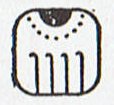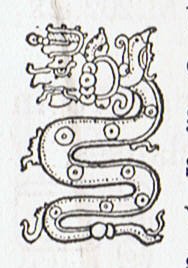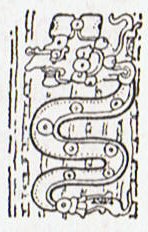|
TRANSLATIONS
The number of glyphs in K has earlier been reconstructed by me as *97 + *95 = *192. Earlier, in comparing K with G, I have also speculated if not the text in K is covering only half the year (while G evidently covers a whole year). Remarkably the new model arrived at has 2 * 96 = 192 days for the summer half of the year (as based on the tabulated 24 first stations of the kuhane journey), which gives support to the idea that K covers only summer. This idea has now grown from an idea into the status of a hypothesis.
Seen from the other direction, the estimated number of glyphs in K gives support to the idea that an Easter Island summer was regarded as stretching 192 days long. The new model with twice 84 days for winter and twice 96 days for summer was arrived at without any concern for the estimated number of glyphs in K. It instead originated from the notable fact that the Pokoman people used the word vinak instead of the normal k'al in one instance, viz. for the time period of 4 * 20 days. Adding this peculiar fact to my guess about Vinapu being associated both as a word and in meaning with vinal (and thereby also with vinak), I speculated if not the Easter Islanders could have thought along the same lines, but with a preferred 84 instead of 80. Vinapu would then stand for the same concept as the Pokoman vinak (though with 4 * 21 instead of 4 * 20). The structure I had gradually developed for the Mayan months was also an important background input:
Vayeb cuts in two the winter half of the year (from 15 Moan up to and including 4 Zotz), just like the 24 first kuhane stations are distributed with the winter half of the year (4th and 1st quarters) cut in the middle between the months He Maro and Anakena. The structure is the same, the details are not. It is slowly dawning on me that there may be a wealth of more or less close parallels between the Maya 'cosmos' and the Easter Island 'cosmos'. Such parallels seem, e.g., to exist between Imix and mago in Ka4-14:
I suggest the 'mouth' in Ahau is a parallel to the oval in Ka4-13; both illustrate the completed cycle of 20. The ordinal numbers 4-13 seem to allude to 52 (as the number of weeks in a complete lunar year counted as 364 days). Reading about Imix in Gates I became surprised, indeed, because the day means 'sea dragon' (and in general 'water' - not so surprising because in the beginning everything was 'water'). More descriptive Imix pictures show the 'sea dragons' with a serpentine body (maybe explaining why the tail in the mago glyph type is curved):
"At 60.a [first dragon at left above] is what can be none other than Imix in his very person, the great 'dragon of the waters', rising from this same 'great green' [the background colour indicating the green 'water'] ... Finally, in tz. 55. f, page 36 [in the Dresden codex], we again find a full figure of the crested dragon [right above], apparently not in the sea itself but in falling torrents, with a double-imix crest ..." It could be a coincidence, of course, that the two adjoining days Ahau and Imix (end and beginning - like omega and alfa) are illustrated in a way which looks similar to the end and the beginning (established earlier by me) in Ka3-13--14. On the other hand, if it was not a coincidence? The 'banded headdress' in Vayeb (like the midsection in the tun drum) probably has its white midsection divided in two because there is a split between the old and the new years:
In Pax (left above) the white wooden band is not yet cut in two (in spite of pax meaning 'broken'). |
|||||||||||||||||||||||||||||||||||||||||||||||||||||||||||||||||||||||||||||||||||||||||||||||||||||||||||||||||||||























